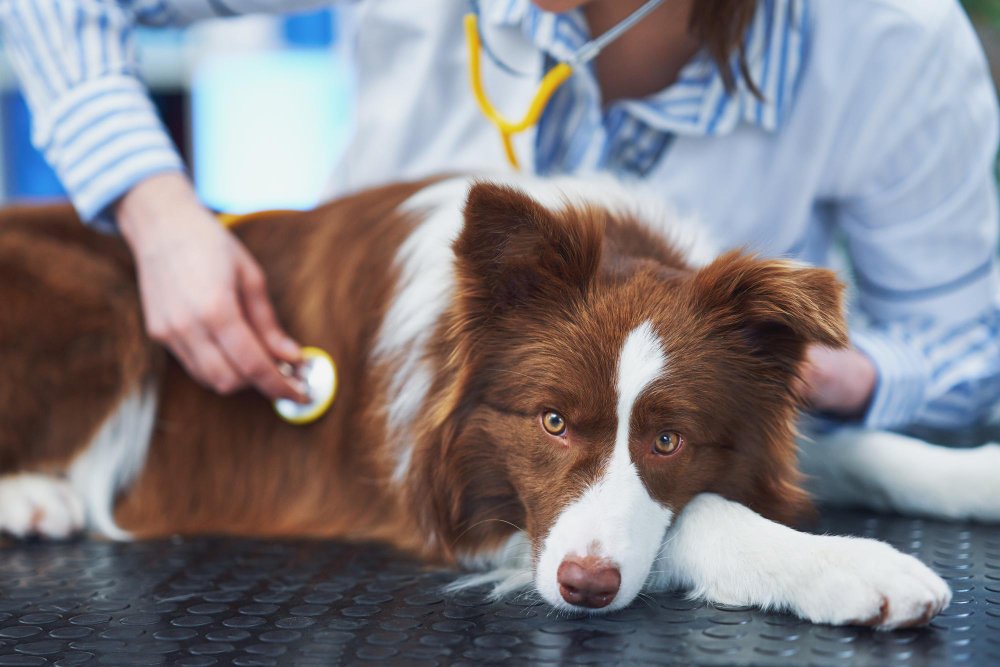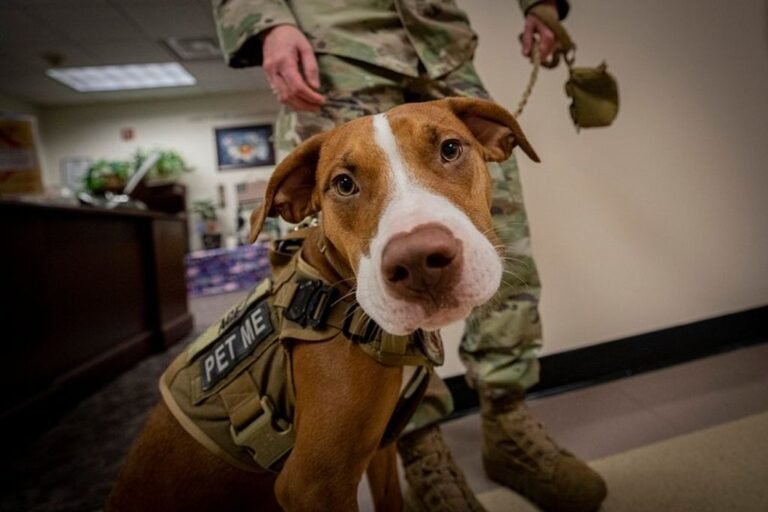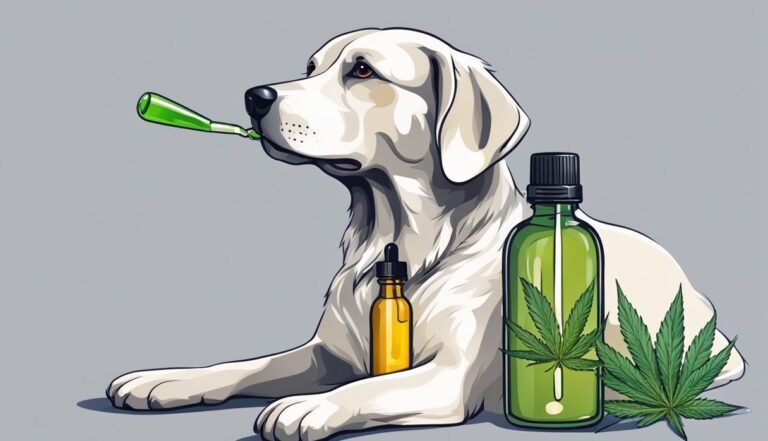Pet First Aid: Essential Skills Every Pet Owner Should Know
Pet first aid is a crucial skill that every pet owner should have. Accidents and emergencies can happen at any time, and being prepared with the knowledge and tools to provide immediate care can make a significant difference in your pet’s well-being. From basic first aid techniques to handling more serious injuries and illnesses, this article will cover essential skills that every pet owner should know. By learning these skills, you can ensure that you are equipped to handle common emergencies and provide the necessary care until professional help is available.
Key Takeaways
- Pet first aid is an important skill for every pet owner to have.
- Creating a pet first aid kit is essential for being prepared in case of emergencies.
- Recognizing common pet emergencies and knowing how to respond can save your pet’s life.
- Learning CPR for pets can be life-saving in critical situations.
- Knowing how to handle and treat different types of injuries and wounds is crucial for your pet’s well-being.
Why Pet First Aid is Important
Understanding the Basics of Pet First Aid
When it comes to pet first aid, knowledge is key. Understanding the basics of pet first aid can help you provide immediate care to your furry friend in case of an emergency. One important aspect of pet first aid is having the right tools on hand. Make sure to have a pet first aid kit stocked with essentials such as bandages, antiseptic wipes, and scissors and tweezers. These tools can be used to clean wounds, remove debris, and provide temporary relief until you can get your pet to a veterinarian.
In addition to having the right tools, it’s important to know how to recognize common pet emergencies. Being able to identify signs of distress or injury can help you take quick action. Look out for symptoms such as difficulty breathing, excessive bleeding, or unconsciousness. If you notice any of these signs, it’s important to stay calm and provide immediate first aid.
Remember, pet first aid is not a substitute for professional veterinary care. It’s important to seek medical attention for your pet as soon as possible, even if you have provided first aid. Your veterinarian will be able to provide a thorough examination and determine the best course of treatment for your pet’s specific needs.
Creating a Pet First Aid Kit
When it comes to creating a pet first aid kit, preparation is key. Having a well-stocked kit can make all the difference in an emergency situation. Here are some essential items to include in your kit:
- Gauze pads and adhesive tape for dressing wounds
- Antiseptic solution for cleaning cuts and scrapes
- Tweezers for removing splinters or ticks
- Scissors for cutting bandages or fur
- Disposable gloves to protect yourself and prevent infection
It’s also important to have the contact information for your veterinarian and the nearest emergency veterinary clinic readily available. Keep this information in a easily accessible place, such as on your refrigerator or saved in your phone’s contacts. In case of an emergency, time is of the essence, and having this information readily available can help you act quickly and efficiently.
Remember, a well-prepared pet first aid kit can be a lifesaver for your furry friend!
Recognizing Common Pet Emergencies
When it comes to being a responsible pet owner, it’s important to be prepared for any emergency that may arise. By knowing how to recognize common pet emergencies, you can take quick action to help your furry friend when they need it most. Here are some key signs to look out for:
- Difficulty breathing: If your pet is struggling to breathe or is panting excessively, it could be a sign of a respiratory emergency.
- Uncontrolled bleeding: If your pet is bleeding heavily and the bleeding doesn’t stop with direct pressure, it’s important to seek immediate veterinary care.
- Severe vomiting or diarrhea: Persistent vomiting or diarrhea can lead to dehydration and other complications, so it’s important to seek veterinary attention if it continues.
It’s important to remember that every pet is different, and what may be an emergency for one pet may not be for another. If you’re ever unsure, it’s always best to err on the side of caution and seek veterinary advice.
Performing CPR on Your Pet
Performing CPR on your pet can be a life-saving skill in emergency situations. It is important to remember that pet care should always be a top priority, and knowing how to perform CPR can help you provide immediate assistance until veterinary help is available.
To perform CPR on your pet, follow these steps:
- Check for responsiveness: Gently tap your pet and call their name to see if they respond. If there is no response, proceed to the next step.
- Clear the airway: Open your pet’s mouth and check for any obstructions. If there is an obstruction, carefully remove it using your fingers or a pair of tweezers.
- Begin chest compressions: Place your pet on a firm surface and position yourself beside them. Place one hand on top of the other and interlock your fingers. Press down firmly on your pet’s chest, using the heel of your hand, at a rate of 100-120 compressions per minute.
- Give rescue breaths: After 30 compressions, tilt your pet’s head back slightly and cover their nose with your mouth. Give two rescue breaths, watching for their chest to rise.
Remember, performing CPR on your pet should only be done if you are trained and confident in your abilities. It is always best to seek veterinary care as soon as possible.
Handling Injuries and Wounds
Treating Cuts and Scrapes
When it comes to treating cuts and scrapes on your pet, it’s important to take immediate action to prevent infection and promote healing. Start by gently cleaning the wound with a mild antiseptic solution and warm water. Use a clean cloth or gauze pad to apply gentle pressure to stop any bleeding. If the wound is deep or bleeding heavily, it’s best to seek veterinary care.
After cleaning the wound, apply a pet-safe antibiotic ointment to help prevent infection. You can find these ointments at your local pet store or ask your veterinarian for a recommendation. It’s important to keep an eye on the wound and monitor for any signs of infection, such as redness, swelling, or discharge.
Remember, dog first aid is all about taking quick action and providing the necessary care to ensure your pet’s well-being. By following these steps, you can effectively treat cuts and scrapes and help your pet recover quickly.
Dealing with Broken Bones
When it comes to broken bones, it’s important to handle the situation with care. Bandage the affected area gently to provide support and immobilize the bone. This will help prevent further injury and reduce pain. Remember to avoid putting pressure directly on the bone and use padding, such as cotton or gauze, to protect the skin. If the bone is protruding through the skin, cover it with a clean cloth or sterile dressing to prevent infection. Seek immediate veterinary attention for proper diagnosis and treatment. Your veterinarian may recommend X-rays to assess the extent of the injury and determine the best course of action. Follow their instructions closely and provide your pet with a comfortable and quiet space to rest and recover.
Managing Burns and Scalds
When it comes to managing burns and scalds, it’s important to act quickly and effectively to minimize further damage and provide relief for your pet. Burns and scalds can be caused by various sources such as hot surfaces, boiling liquids, or chemicals. If your pet experiences a burn or scald, here are some steps you can take:
- Assess the severity of the burn or scald. If it’s a minor burn, you can provide first aid at home. However, if it’s a severe burn or scald, it’s crucial to seek veterinary assistance immediately.
- Remove the source of the burn or scald. If your pet’s fur or skin is in contact with a hot surface or liquid, carefully move them away from it to prevent further injury.
- Cool the affected area. Use cool (not cold) water or a damp cloth to gently cool the burn or scald. Avoid using ice or very cold water as it can cause further damage.
- Cover the burn or scald. Once the area is cooled, you can cover it with a clean, non-stick bandage or cloth to protect it from further contamination.
Remember, burns and scalds can be painful for your pet, so it’s important to provide comfort and seek veterinary care if necessary.
Handling Eye and Ear Injuries
When it comes to eye and ear injuries, it’s important to act quickly and appropriately to prevent further damage and discomfort for your pet. Here are some important steps to take:
- Assess the situation: Before attempting any first aid, carefully evaluate the severity of the injury and determine if immediate veterinary attention is necessary.
- Protect yourself and your pet: Before touching your pet’s eye or ear, make sure to wash your hands thoroughly and put on disposable gloves to prevent the spread of infection.
- Flush the eye or ear: If there is a foreign object in your pet’s eye or ear, gently flush it out with sterile saline solution or clean water. Avoid using any sharp objects or cotton swabs, as they can cause further damage.
- Apply a cold compress: If your pet’s eye or ear is swollen or inflamed, you can apply a cold compress to help reduce swelling and provide some relief.
Remember, if you’re unsure about how to handle an eye or ear injury, it’s always best to seek veterinary advice and assistance.
Dealing with Poisoning and Toxicity
Identifying Common Household Poisons
When it comes to keeping your pet safe, it’s important to be aware of common household poisons. These substances can be harmful or even fatal if ingested by your furry friend. Cat first aid is crucial in these situations, as quick action can make a big difference in your pet’s outcome. Here are some important poisons to watch out for:
- Cleaning products: Many cleaning products contain chemicals that can be toxic to pets. Keep them securely stored and use pet-friendly alternatives whenever possible.
- Medications: Human medications, such as painkillers and antidepressants, can be dangerous to pets. Keep them out of reach and consult your veterinarian before giving any medication to your pet.
- Plants: Some common household plants, like lilies and azaleas, can be toxic to pets if ingested. Make sure to research the plants in your home and remove any that pose a risk.
Remember, prevention is key when it comes to protecting your pet from household poisons. Keep these substances out of reach and be vigilant in creating a safe environment for your furry friend.
Steps to Take in Case of Poisoning
In case of poisoning, it is important to act quickly and take the necessary steps to ensure the safety and well-being of your pet. Immediate action can make a significant difference in the outcome. Here are some important steps to follow:
- Contact your veterinarian immediately. They will be able to provide guidance on what to do next and may ask for specific information about the poisoning.
- Do not induce vomiting unless instructed to do so by a professional. Some substances can cause more harm if vomited back up.
- Gather any relevant information about the poisoning. This includes the name of the substance, the amount ingested, and the time of ingestion. This information will be helpful for your veterinarian.
- Keep your pet calm and comfortable. Try to minimize stress and keep them in a quiet, safe environment.
- Do not administer any home remedies without consulting a veterinarian. Some remedies can be harmful or ineffective.
Remember, every second counts in a poisoning emergency. Acting quickly and seeking professional help is crucial for the well-being of your pet.
Administering First Aid for Toxic Ingestion
When it comes to administering first aid for toxic ingestion, time is of the essence. If you suspect that your pet has ingested something toxic, it is important to act quickly to minimize the potential harm. Here are some steps you can take:
- Contact your veterinarian immediately for guidance. They will be able to provide specific instructions based on the type of toxin and your pet’s condition.
- Do not induce vomiting unless instructed to do so by a professional. Some substances can cause further damage if vomited back up.
- Collect any relevant information about the substance your pet ingested, such as the name, brand, or active ingredients. This will help your veterinarian determine the best course of action.
Remember, it is crucial to seek professional help in cases of toxic ingestion. Your veterinarian will be able to provide the necessary treatment and support to ensure your pet’s well-being.
Preventing Poisoning in Pets
Preventing poisoning in pets is crucial for their safety and well-being. As a responsible pet owner, there are several steps you can take to minimize the risk of your pet ingesting harmful substances. Awareness is key when it comes to preventing poisoning incidents. Keep a close eye on your pet and supervise them, especially in unfamiliar environments or when they are exploring new areas. Restrict access to areas where potential hazards may be present, such as the kitchen, garage, or garden shed.
It’s also important to store all household chemicals, medications, and toxic plants in secure locations that are out of your pet’s reach. Keep them in cabinets or high shelves to prevent accidental ingestion. Regularly check your home and yard for any potential dangers, such as spilled chemicals or plants that are toxic to pets. Remove these hazards promptly to create a safer environment for your furry friend.
In addition to these preventive measures, it’s essential to be prepared for emergencies. Familiarize yourself with the signs and symptoms of poisoning in pets, which may include vomiting, diarrhea, difficulty breathing, seizures, or loss of consciousness. Have the contact information for your veterinarian and a local animal poison control center readily available in case of an emergency.
If you suspect that your pet has ingested something toxic, do not attempt to induce vomiting unless instructed to do so by a professional. Instead, contact your veterinarian or animal poison control center immediately for guidance. Time is of the essence when it comes to treating poisoning in pets, so swift action is crucial.
Remember, prevention is always better than cure. By taking proactive steps to prevent poisoning incidents and being prepared for emergencies, you can help keep your pet safe and healthy.
Responding to Allergic Reactions
Recognizing Signs of Allergic Reactions
Allergic reactions can be scary for both you and your pet. It’s important for pet owners to be able to recognize the signs of an allergic reaction so that prompt action can be taken. Some common signs include itchy skin, hives, swelling, vomiting, and difficulty breathing. If you notice any of these symptoms in your pet, it’s crucial to seek veterinary care immediately. Time is of the essence when it comes to allergic reactions, as they can quickly escalate and become life-threatening. Don’t hesitate to contact your veterinarian if you suspect your pet is having an allergic reaction.
Administering First Aid for Allergies
When it comes to administering first aid for allergies, it’s important to act quickly and effectively to alleviate your pet’s discomfort. Here are some steps you can take:
- Identify the allergen: Try to determine what is causing the allergic reaction in your pet. It could be a certain food, environmental factor, or even a medication.
- Remove the allergen: Once you have identified the allergen, remove it from your pet’s environment. This may involve changing their diet, avoiding certain areas, or discontinuing the use of specific products.
- Provide relief: To help relieve your pet’s symptoms, you can try giving them an antihistamine or using a topical cream to soothe any skin irritation.
- Consult a veterinarian: If your pet’s allergic reaction is severe or persistent, it’s important to seek professional help. A veterinarian can provide further guidance and recommend appropriate treatment options.
Remember, preventing allergic reactions is key to keeping your pet healthy and happy. Be mindful of potential allergens and take necessary precautions to ensure your pet’s well-being.
Managing Anaphylaxis in Pets
Anaphylaxis is a severe allergic reaction that can be life-threatening for your pet. It occurs when your pet’s immune system overreacts to a specific allergen, such as certain foods, insect bites, or medications. Recognizing the signs of anaphylaxis is crucial in order to provide immediate first aid. Some common symptoms include difficulty breathing, swelling of the face or throat, vomiting, and weakness. If you suspect your pet is experiencing anaphylaxis, follow these steps:
- Stay calm and try to keep your pet calm as well. Panicking can worsen the situation.
- Remove your pet from the source of the allergen, if possible. For example, if your pet was stung by a bee, carefully remove the stinger.
- Administer any prescribed medication, such as an epinephrine auto-injector, if available.
- Seek veterinary care immediately. Anaphylaxis can progress rapidly, so it’s important to get professional help as soon as possible.
Remember, anaphylaxis is a serious condition that requires prompt attention. Being prepared and knowing how to respond can make a significant difference in your pet’s outcome.
Preventing Allergic Reactions
Preventing allergic reactions in your pet is crucial for their wellbeing. Here are some important steps you can take:
- Keep your pet’s environment clean and free of allergens.
- Regularly groom your pet to remove any potential allergens from their fur.
- Use hypoallergenic products for bathing and grooming.
- Be mindful of your pet’s diet and avoid feeding them foods that may trigger allergies.
Remember, prevention is key when it comes to allergic reactions. By following these steps, you can help ensure your pet stays healthy and free from allergies.
Handling Heatstroke and Hypothermia
Understanding the Dangers of Heatstroke
Heatstroke is a serious condition that can be life-threatening for your pet. It occurs when their body temperature rises to dangerous levels, usually as a result of prolonged exposure to high temperatures or strenuous physical activity in hot weather. Whiskers are particularly important to monitor during hot weather, as cats and dogs rely on their whiskers to help regulate their body temperature. When their whiskers are drooping or limp, it may be a sign that they are overheating. Other symptoms of heatstroke include excessive panting, drooling, rapid heartbeat, and weakness. If you suspect your pet is suffering from heatstroke, it’s crucial to take immediate action to cool them down and seek veterinary care.
Recognizing Symptoms of Heatstroke
Heatstroke can be a life-threatening condition for your pet, so it’s important to recognize the symptoms early on. Some common signs of heatstroke in pets include excessive panting, drooling, rapid breathing, elevated body temperature, and weakness. If you notice any of these warning signs, it’s crucial to take immediate action to cool down your pet and seek veterinary care.
Here are some vital tips to help you respond to heatstroke:
- Move your pet to a cool, shaded area
- Offer them water to drink, but do not force it
- Wet their fur with cool water or use wet towels
- Use a fan or air conditioning to help lower their body temperature
Remember, heatstroke can be a serious medical emergency, so it’s important to act quickly and seek professional help. By recognizing the symptoms and taking prompt action, you can help prevent further complications and ensure the well-being of your beloved pet.
Providing First Aid for Heatstroke
When providing first aid for heatstroke, it is important to act quickly and effectively to prevent further harm to your pet. Heatstroke can be a life-threatening condition, so it is crucial to know the signs and symptoms and take immediate action. Here are some steps you can take to provide first aid for heatstroke:
- Move your pet to a cool, shaded area. It is important to get your pet out of the heat and into a cooler environment as soon as possible.
- Apply cool water to your pet’s body. Use a hose or wet towels to gently cool your pet down. Avoid using ice-cold water as it can cause shock.
- Offer your pet small amounts of water to drink. Do not force your pet to drink, but encourage them to take small sips.
- Contact your veterinarian. Even if your pet seems to be recovering, it is important to seek veterinary care as soon as possible.
Remember, heatstroke can be a serious medical emergency, so it is always best to consult with a veterinarian for proper guidance and treatment.
Preventing Heatstroke and Hypothermia
Preventing heatstroke and hypothermia in your pet is crucial for their well-being. Heatstroke occurs when your pet’s body temperature rises to dangerous levels, usually due to exposure to high temperatures or prolonged physical activity in hot weather. Hypothermia, on the other hand, happens when your pet’s body temperature drops below normal levels, typically caused by exposure to cold temperatures or wet conditions.
To prevent heatstroke, make sure your pet has access to shade and fresh water at all times, especially during hot summer days. Avoid leaving your pet in a parked car, as the temperature inside can quickly rise to dangerous levels. If you notice signs of heatstroke such as excessive panting, drooling, or weakness, move your pet to a cool area and apply cool (not cold) water to their body. Monitor their condition closely and seek veterinary assistance if necessary.
To prevent hypothermia, provide your pet with a warm and dry shelter during cold weather. Limit their exposure to cold temperatures and avoid letting them stay outside for extended periods. If your pet shows signs of hypothermia such as shivering, lethargy, or pale gums, bring them indoors and wrap them in a warm blanket. Contact your veterinarian for further guidance.
Remember, taking preventive measures is key to keeping your pet safe and healthy in extreme weather conditions. Heatstroke and hypothermia are serious conditions that can affect the health and well-being of our beloved pets. As responsible pet owners, it is crucial to understand how to handle these emergencies and provide the necessary care. At Whisker Wellbeing, we are dedicated to holistic and natural care for pets, including cats and dogs. Visit our website to learn more about our products and how they can benefit your pet’s health. Take the first step towards ensuring the well-being of your pet by visiting Whisker Wellbeing today!
Conclusion
In conclusion, knowing basic first aid skills for pets is essential for every pet owner. By being prepared and knowledgeable, you can provide immediate care and potentially save your pet’s life in an emergency situation. Remember to stay calm, assess the situation, and take appropriate action. Whether it’s performing CPR, stopping bleeding, or treating common injuries, having these skills can make a significant difference. So, take the time to educate yourself and be ready to be your pet’s first responder when they need it most.
Frequently Asked Questions
What is pet first aid?
Pet first aid refers to the immediate care and treatment given to a pet in the event of an injury or illness before professional veterinary assistance is available.
Why is pet first aid important?
Pet first aid is important because it can help stabilize a pet’s condition, prevent further injury or illness, and potentially save their life until they can receive proper veterinary care.
What should be included in a pet first aid kit?
A pet first aid kit should include items such as bandages, gauze pads, adhesive tape, antiseptic solution, tweezers, scissors, gloves, a pet thermometer, and contact information for your veterinarian.
How do I recognize common pet emergencies?
Common signs of pet emergencies include difficulty breathing, excessive bleeding, choking, seizures, sudden collapse, severe pain, vomiting or diarrhea, and ingestion of toxic substances.
How do I perform CPR on my pet?
To perform CPR on your pet, place them on a firm surface, check for breathing and a heartbeat, perform chest compressions and rescue breaths following the appropriate technique for their size, and continue until veterinary help is available.
How can I prevent heatstroke and hypothermia in my pet?
To prevent heatstroke, ensure your pet has access to shade and fresh water, avoid leaving them in hot cars, and limit exercise during hot weather. To prevent hypothermia, provide your pet with warm shelter, blankets, and limit exposure to cold temperatures.







